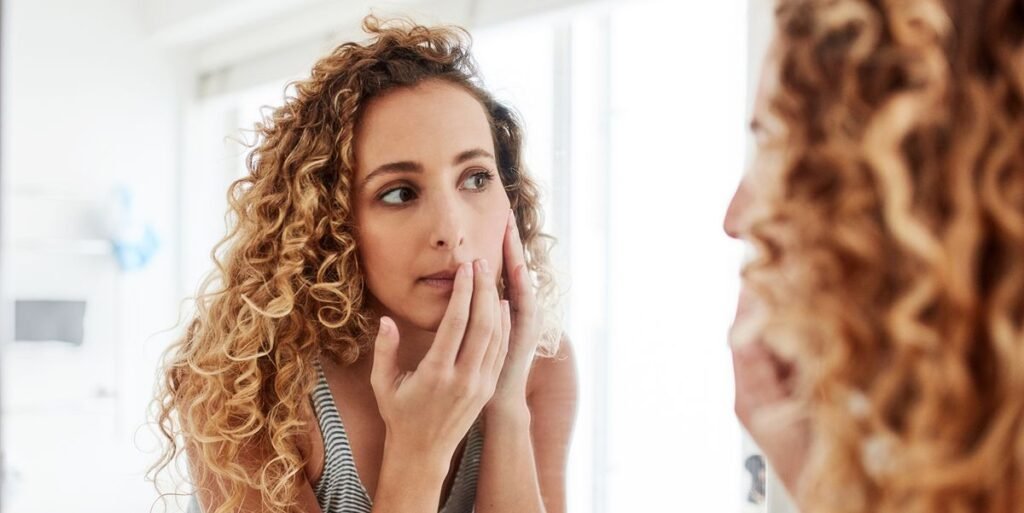Understanding Common Skin Bumps: What to Do Instead of Picking
Seeing an unexpected bump on your face can be alarming, launching you into an instinctive urge to touch, poke, or pop it. However, dermatologists across the board advocate against this instinct.
“Avoiding the urge to pop is crucial,” emphasizes Dr. Dendy Engelman, MD, a board-certified dermatologist based in New York City. “Popping can physically damage the skin, increasing the likelihood of infection and scarring,” adds Dr. Noelani Gonzalez, MD, FAAD, the director of cosmetic dermatology at Mount Sinai West. Instead of diving into DIY treatments, consider expert-approved skincare methods and professional assistance to tackle your skin issues.
When You Shouldn’t Pop: A Look at Common Skin Bumps
Let’s explore various skin bumps and the most effective ways to treat them properly:
1. Cystic Acne
- Description: Deep, painful bumps that occur under the skin.
- Causes: Hormonal fluctuations, acne bacteria, or blocked pores.
- Treatment: Consult a dermatologist for possible cortisone shots to reduce swelling.
2. Milia
- Description: Small, white cysts that resemble tiny bumps.
- Causes: Trapped dead skin cells beneath the surface.
- Treatment: A dermatologist can extract them safely or recommend topical retinoids.
3. Ingrown Hairs
- Description: Red, itchy bumps that can form when hair gets trapped beneath the skin.
- Causes: Hair growth in the wrong direction, often after shaving.
- Treatment: Wash the area with an exfoliating cleanser and apply hydrocortisone to reduce inflammation.
4. Skin Tags
- Description: Soft, harmless growths that often occur in areas of friction.
- Causes: Skin rubbing against skin or clothing.
- Treatment: Professional removal options like cryotherapy or surgical excision.
5. Cold Sores
- Description: Fluid-filled blisters that can appear on or around the lips.
- Causes: The herpes simplex virus.
- Treatment: Use OTC treatments or consult a doctor for antiviral medications for frequent outbreaks.
6. Dermatosa Papulosa Nigra (DPN)
- Description: Small, dark bumps, typically on darker skin tones.
- Causes: A genetic predisposition, often benign.
- Treatment: Consultation with a dermatologist for removal has minimal risks.
7. Keratosis Pilaris
- Description: Painless bumps that can appear on the arms, thighs, or face.
- Causes: Buildup of keratin blocking hair follicles.
- Treatment: Use exfoliating products with salicylic acid or glycolic acid, and consult if needed.
8. Blackheads and Whiteheads
- Description: Clogged pores that form due to excess oil.
- Causes: Oil oxidation leads to blackheads; trapped oil remains white in whiteheads.
- Treatment: Regular use of salicylic acid and retinol to promote cell turnover.
9. Seborrheic Keratoses
- Description: Frictional growths that can appear brown or black.
- Causes: Genetics and sun exposure.
- Treatment: Your dermatologist can provide removal options if they become irritated.
10. Lipomas
- Description: Soft, fatty lumps beneath the skin.
- Causes: Genetic factors.
- Treatment: Surgical removal is your safest bet.
11. Cherry Angiomas
- Description: Bright red spots made up of tiny blood vessels.
- Causes: Unknown, potential genetic components.
- Treatment: Professional removal methods like laser therapy.
12. Sebaceous Cysts
- Description: cysts filled with oily material.
- Causes: Blocked oil glands.
- Treatment: They may require surgical removal if they become painful.
13. Sebaceous Hyperplasia
- Description: Small, painless bumps often on the face.
- Causes: Overgrowths of oil glands.
- Treatment: Electrocautery or laser removal can offer effective remedies.
14. Rosacea
- Description: A chronic condition causing blush-like patches and bumps.
- Causes: Various triggers like stress, heat, or certain foods.
- Treatment: Dermatological interventions include topical treatments and lifestyle advice.
15. Eczema
- Description: Red, inflamed, and itchy patches on the skin.
- Causes: Various inflammatory skin disorders.
- Treatment: Consult a dermatologist for specific medical treatments and lifestyle advice.
16. Warts
- Description: Skin growths resulting from HPV.
- Causes: Skin-to-skin contact.
- Treatment: Seek antifungal medications for effective management.
17. Boils
- Description: Infected bumps filled with pus.
- Causes: Bacterial infections.
- Treatment: Medical intervention often requires incision and drainage.
18. Keloids
- Description: Thickened areas of scar tissue.
- Causes: Skin trauma.
- Treatment: Laser and injection treatments by a dermatologist are recommended.
When to Consult a Dermatologist
If you notice any unusual skin changes or if an existing bump hasn’t improved with OTC treatments, it’s crucial to consult with a dermatologist. Regular skin checks can significantly promote early detection of potential skin issues, especially moles that change in appearance.
Remember, while the temptation to pop or pick at these bumps is great, your skin’s health is best preserved through professional care and effective management strategies. Always prioritize the safety of your skin by seeking expert advice to ensure lasting results.


